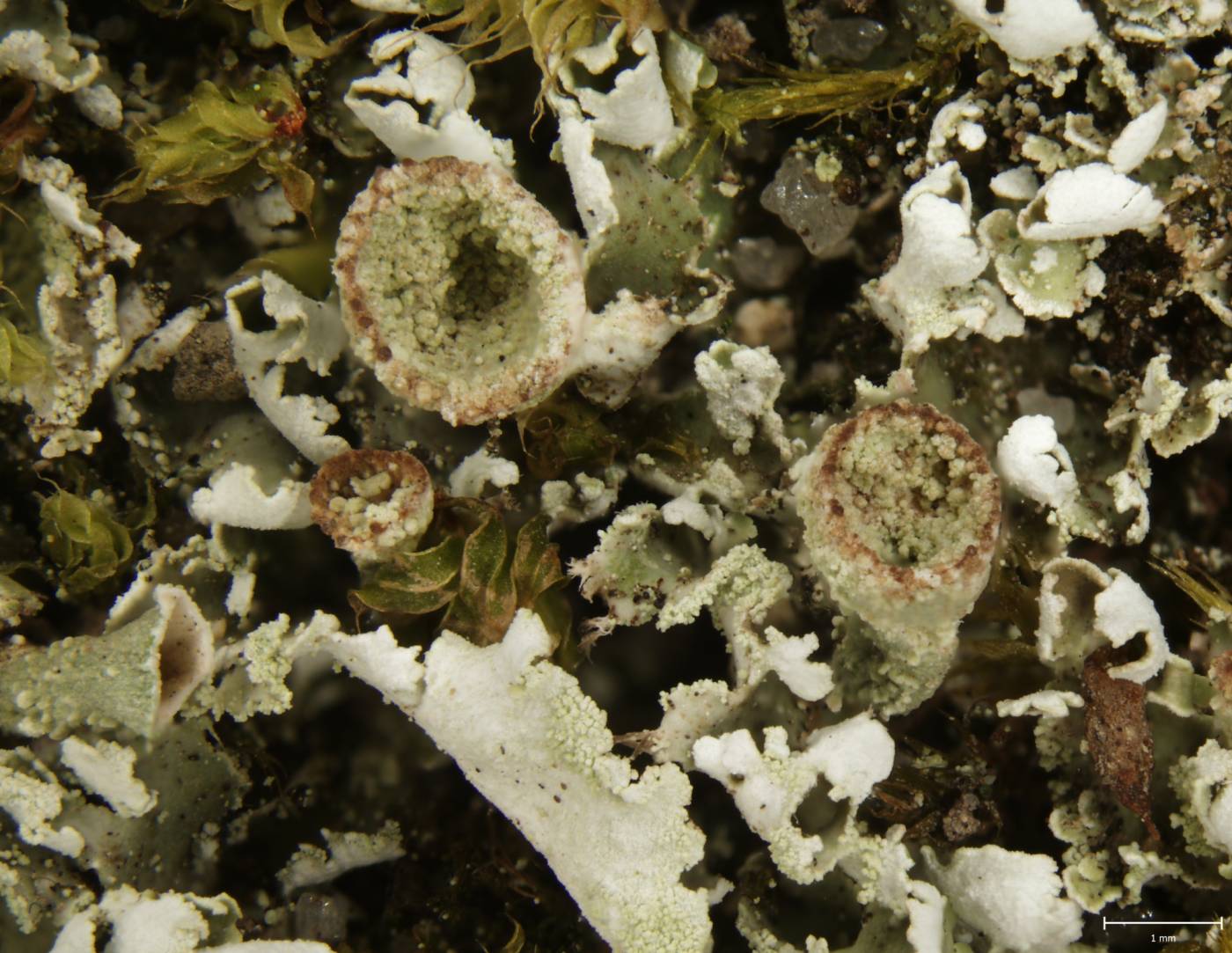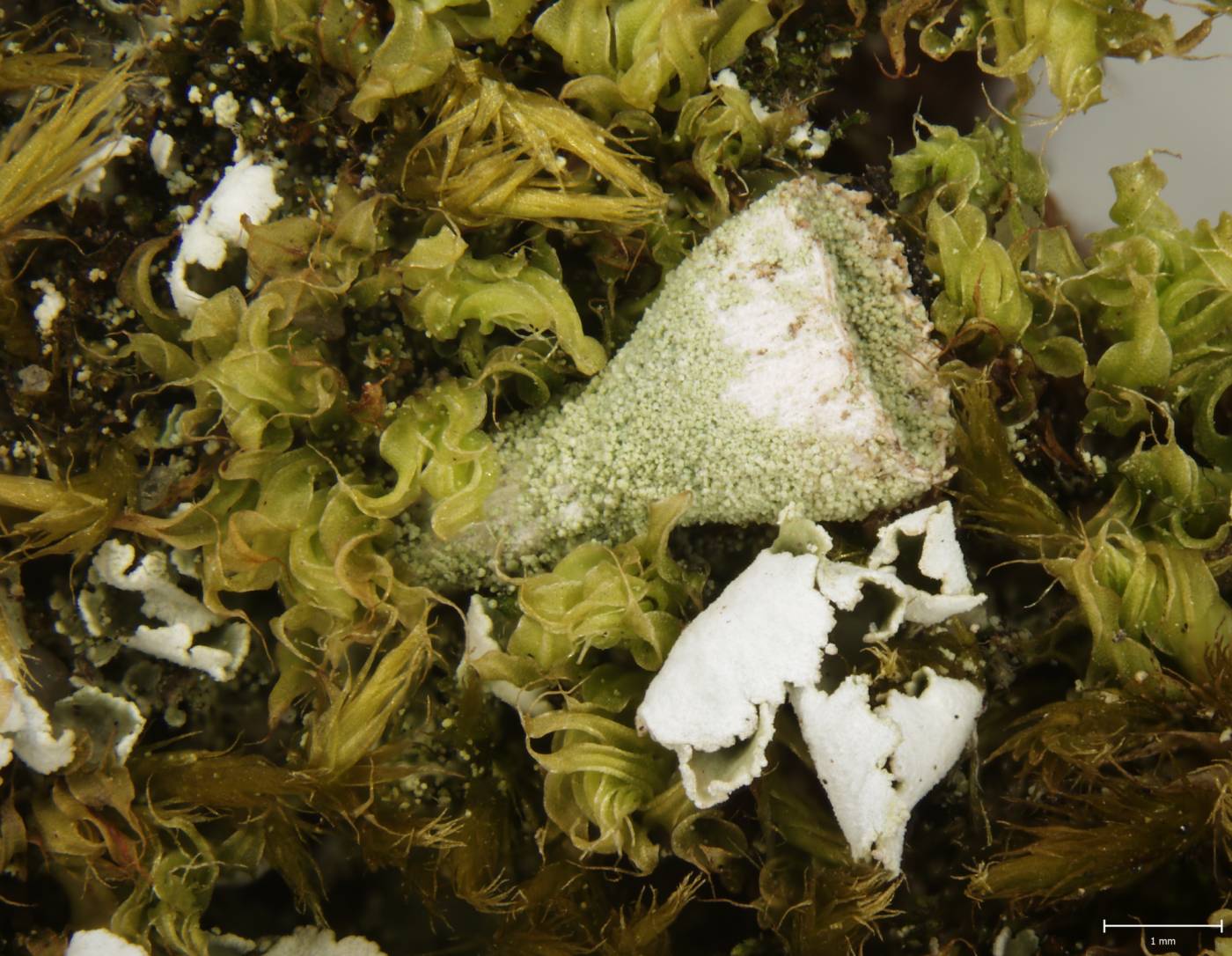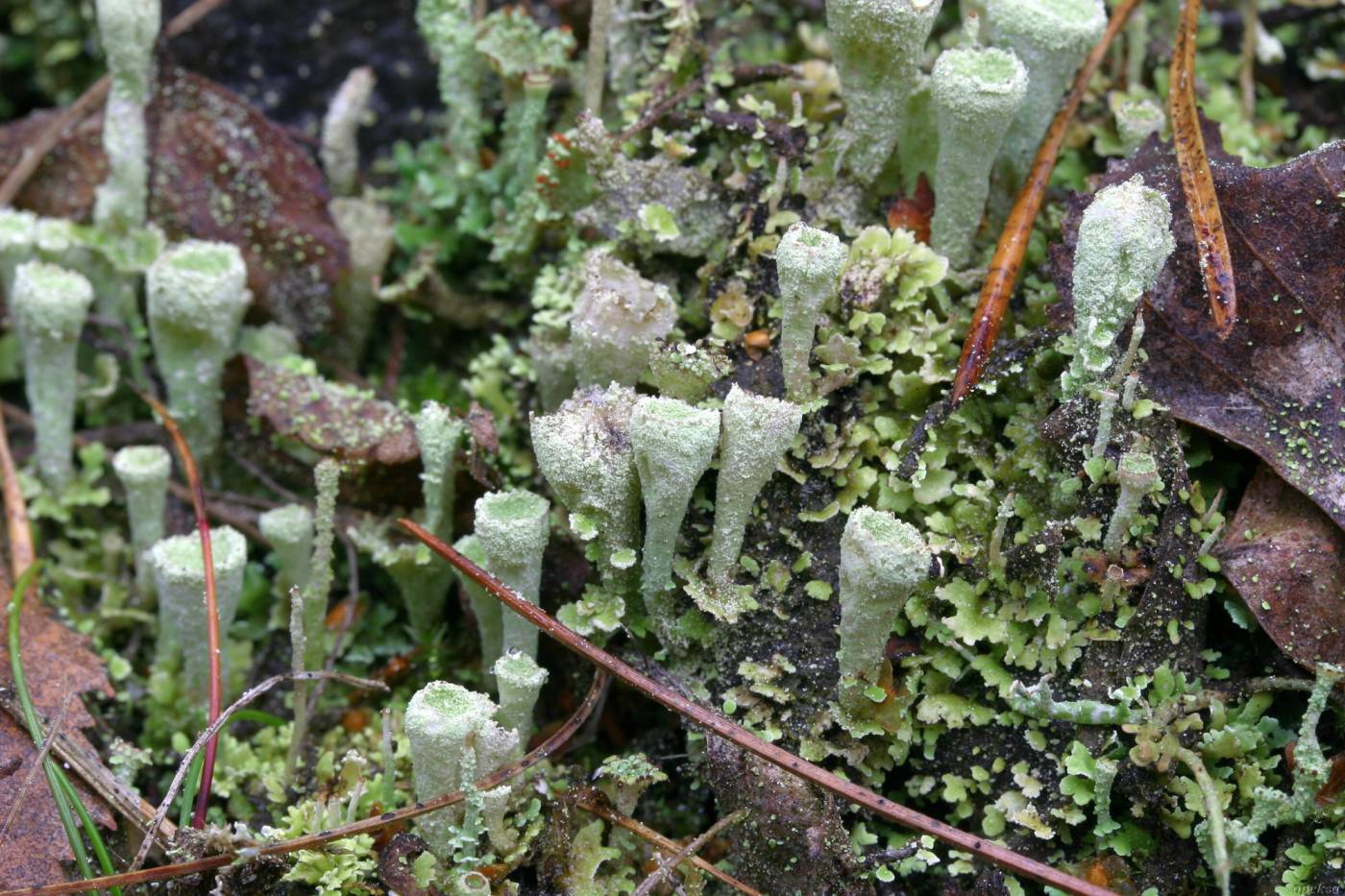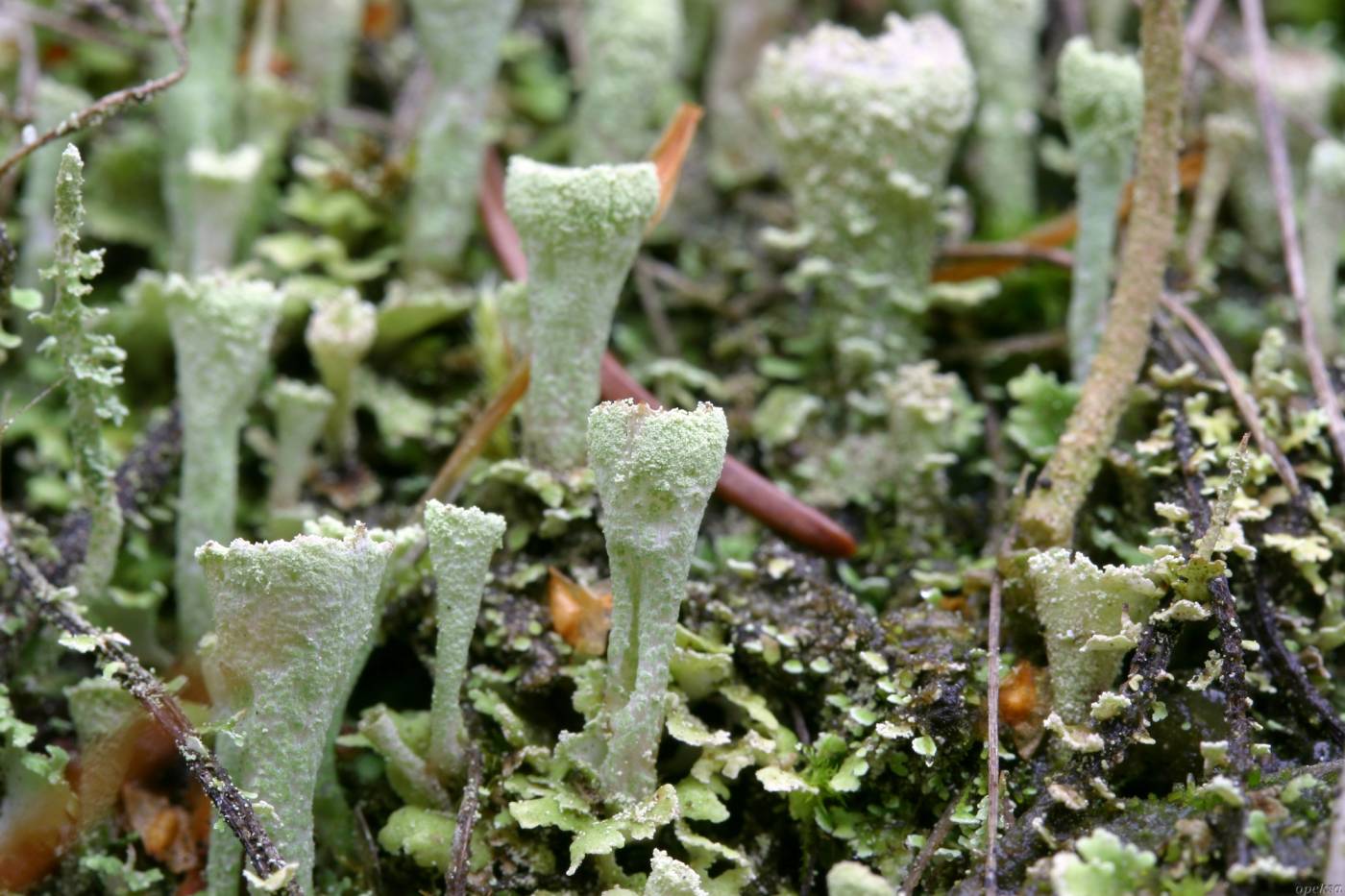Cladonia humilis resembles the common C. fimbriata, from which it mainly differs in the corticate base, sometimes even the lower two thirds, of the podetium. In the field, it is difficult to distinguish from C. conista, which has narrower and higher scyphi. However, they are reliably distinguished chemically; C. humilis produces atranorin while C. conista produces bourgeanic acid (fatty acid).
Cladonia humilis is a typical pioneer species on exposed, usually acidic sandy soil. More rarely, it also occurs on other substrates, e.g., mossy rocks. It is most commonly found in anthropogenic habitats, such as sand pits, quarries, spoil piles, sludge ponds or road edges. Occurrences in natural stands are also known, e.g., rocky slopes. In Europe and the Czech Republic it is infrequently recorded, partly probably overlooked.
taxonomic classification:Ascomycota → Lecanoromycetes → Lecanorales → Cladoniaceae → Cladonia
Red List (Liška & Palice 2010):DD – data deficient
Red List (Malíček 2023):C3 – endangered
Occurrence in the Czech Republic
All records: 51, confirmed 38. One click on a selected square displays particular record(s), including their source(s).






